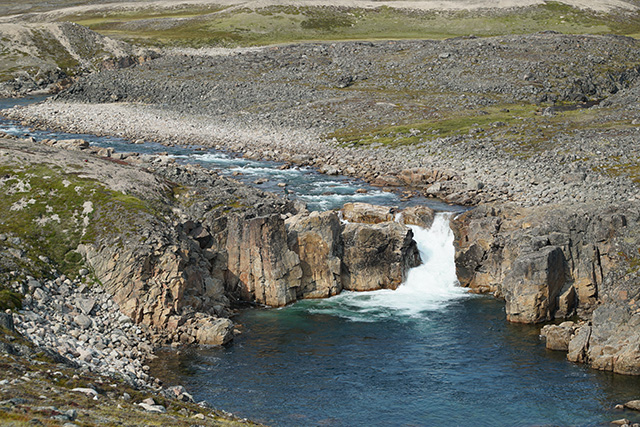
Geology
Ukkusiksalik National Park
Ukkusiksalik National Park is a remarkable expanse of tundra that overlies the Canadian Shield. The park’s landscape is defined by an endless series of low ridges, jigsaw-puzzle lakes, and broad rivers, all of which offer a glimpse into the region’s geological past.
Glacial History and Processes
Seven thousand years ago, the area now known as Ukkusiksalik National Park was covered by the last remnants of the Laurentide Ice Sheet. This massive ice sheet, which had dominated northern Canada for about eighty thousand years, was in retreat, uncovering a landscape that had been depressed under its immense weight. The slow and powerful ice movement scraped and sculpted the bedrock, leaving polished and striated granite surfaces. As the ice melted, it left behind a vast flooded plain, now largely represented by the Tyrrell Sea, and a complex network of valleys and basins that formed the watersheds of major rivers in the region.
Rock Types
The geology of Ukkusiksalik National Park is characterized by its ancient bedrock, predominantly granite and gneiss, which are more than 2.5 billion years old. These rocks are some of the oldest on Earth, dating back to a time when the planet's continents were unrecognizable. The granite bedrock, shaped by glacial activity, forms a significant part of the Canadian Shield and provides a stark, rugged backdrop to the park's landscape.
Soapstone Deposits
One of the unique geological features of Ukkusiksalik National Park is its rich deposits of soapstone, a type of metamorphic rock. The park's name itself, meaning "place where there is stone to carve pots and oil lamps" highlights the historical importance of soapstone to the Inuit. This soft rock was carved into pots and oil lamps, essential tools for heating and cooking in Arctic environments. Soapstone was also used to create intricate carvings of land animals and people, as well as practical items like qulliqs (stone lamps) and ukkusiks (pots). Carving soapstone was a significant cultural practice, not only for creating tools and art but also for trade. Inuit artisans often transported these heavy carvings by dogsled, wrapped in caribou skin for protection. The soapstone deposits are not only significant for their cultural heritage but also as a distinct element of the park's geological identity.

Tidal Influences and Fjord Formation
Wager Bay, a prominent feature of the park, is a dramatic fjord shaped by glacial activity and characterized by its narrow bottleneck entrance. The bay's tides, rising and falling up to eight meters, and the accumulation of ice masses significantly influence the geological and hydrological dynamics of the area. The fjord extends into the northwest, showcasing a variety of geological formations such as the reversing falls.
Related links
- Date modified :